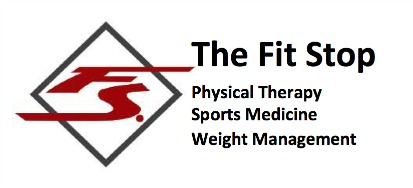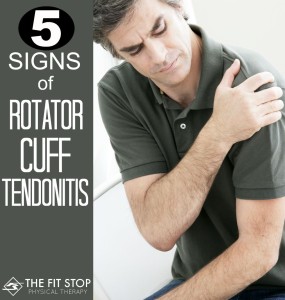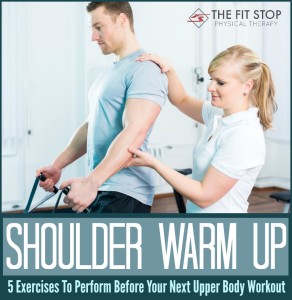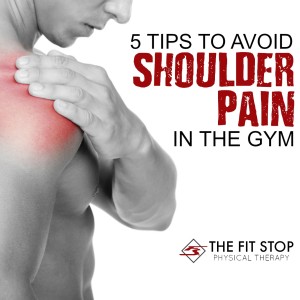Best Conservative Treatment For Shoulder Tendinitis
“Shoulder pain” can mean a lot of different things to a lot of different people. For some it means rest, don’t use it for three days, and maybe it will go away. For others it might be a signal that “I just need to go work it out and it will feel better”. But how do you really know which treatment is right for you? Today on the Fit Stop Blog, Tyler Bluth, PT, MPT is sharing his thoughts on shoulder tendonitis = what if is, why you get it, and some simple steps you can take to help it to feel better. Keep reading for more:
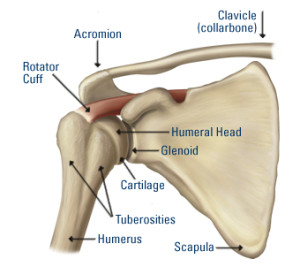 The shoulder is a very complex joint. It’s called a “ball in socket”, but truthfully it functions more similarly to a “ball on a wall”. You have the round ball of the humerus (arm bone) held on to the flat surface of the scapula (shoulder blade) by 4 muscles that essentially create a sling to support the shoulder. When a person moves his/her arm to 30° those muscles engage squishing the ball to the wall. The deltoid muscle then does the bulk of the movement to perform many activities such as pushing, pulling and throwing.
The shoulder is a very complex joint. It’s called a “ball in socket”, but truthfully it functions more similarly to a “ball on a wall”. You have the round ball of the humerus (arm bone) held on to the flat surface of the scapula (shoulder blade) by 4 muscles that essentially create a sling to support the shoulder. When a person moves his/her arm to 30° those muscles engage squishing the ball to the wall. The deltoid muscle then does the bulk of the movement to perform many activities such as pushing, pulling and throwing.
The rotator cuff made up of four different muscles supraspinatus, infraspinatus, teres minor and subscapularis. These muscles are more fibrous and have a tendency to become inflamed. Overuse causes tendinitis in this joint complex. Essentially the rotator cuff gets swollen in a little space and not able to function smoothly. Tendinitis is literally an “inflamed tendon” – when the tendon becomes irritated, inflamed and painful. (Click here to read our “5 Signs You Might Have Rotator Cuff Tendinits“)
How is shoulder tendonitis treated.
Traditional methods for reducing tendinitis in the shoulder are to:
1. Decrease the activity that is causing the pain. If an overhead athlete is doing a lot of throwing it is time to make some adjustments to the throwing motion or to the amount of time the thrower is doing. Same for gardening, weight lifting, gymnastics, painting, or any other repetitive activity with the shoulder.
2.Rest is critical, but not so much that you shoulder becomes stiff in addition to painful. Foing the proper movements that will help restore the motion and decrease inflammation.
3. Anti-inflammatory medication such as NSAIDs and (in more extreme cases) steroid injections are used to decrease inflammation of the joint complex.
4. Physical Therapy -Your physical therapist is a specialist in identifying areas that are weak or otherwise limited and can be contributing to your pain. They will then educate you on proper exercises/activities to keep these structures health, functional, and pain-free.
The therapist will progress the patient into active strengthening exercises. The key component of these strengthening activities are to perform them in an appropriate range. Your therapist will be able to recommend how far you go and how much you push when performing your exercises. That way you get the motion/strength you need, but not at the sake of injuring your shoulder.
5. Ice is helpful as it decreases inflammation externally for a period of 15 to 20 minutes. It is good to use ice following a session of activity.
Shoulders are a difficult joint to rehabilitate when tendonitis has set in. The stress that overhead athletes and every day workers put on makes it difficult to give the appropriate rest to decrease the inflammatory response in the joint complex. With rest and proper range of motion and strength exercises, shoulder pain can decrease dramatically.
Need more information? Would you like to talk to one of our therapists about your shoulder pain? Please click on the links below to set up your next appointment!
345 West 600 South Suite 200
Heber City, UT 84032
(435) 654-5607
Click the links below to be taken to some of our other popular blog posts:
